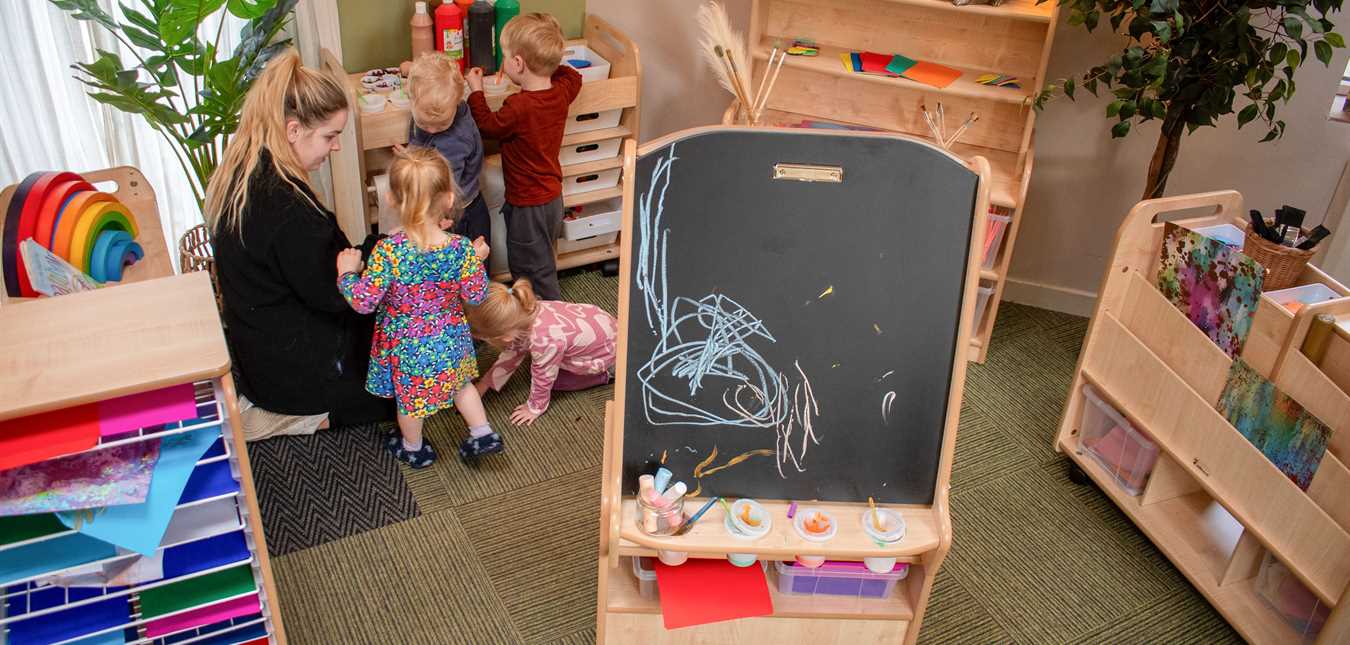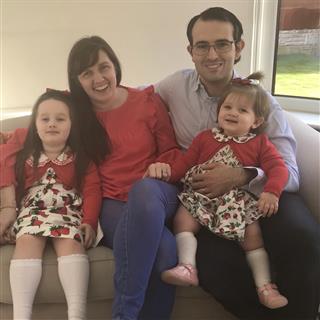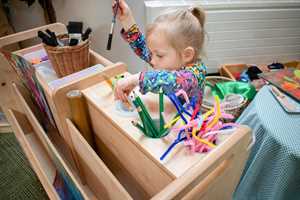Children's Health
How to Support the Six Stages of Early Childhood Play!
At Pentagon Play we believe that play is a crucial element of early childhood development and should be part of every child’s daily routine.
This blog aims to explore the work of Mildred Parten Newhall and her six stages of play theory and to discover how practitioners can support play at each stage.
Mildred Parten Newhall’s Findings
American sociologist and researcher, Mildred Parten Newhall (1902-1970) is best known for her six stages of play theory which is based on her observations of children formed when studying child development and social behaviour at university.
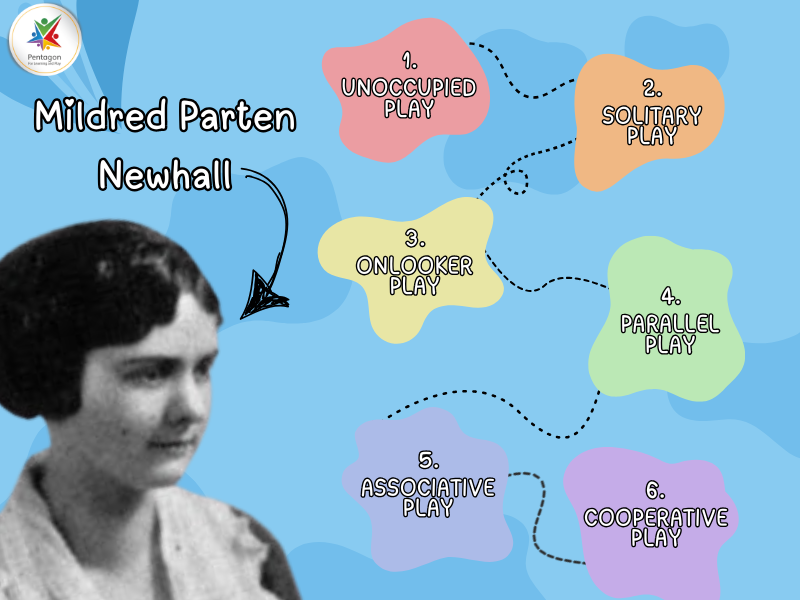
Newhall was one of the first researchers to conduct extensive studies focussing on ‘play.’ She observed preschool children under supervised, intense, one-minute play sessions. Newhall found that it was possible to see and document the different behaviours of the children in free play.
Newhall’s observations led to the recognition of six different types of play. Her play framework provides insight for educators as to how to support children’s play behaviours from 0-5 years.
The Six Stages of Play Theory
Newall suggests that children progress through stages as they develop, moving to more social forms of play. The research highlights how children’s play behaviours evolve as they grow, reflecting developing social skills and cognitive abilities.
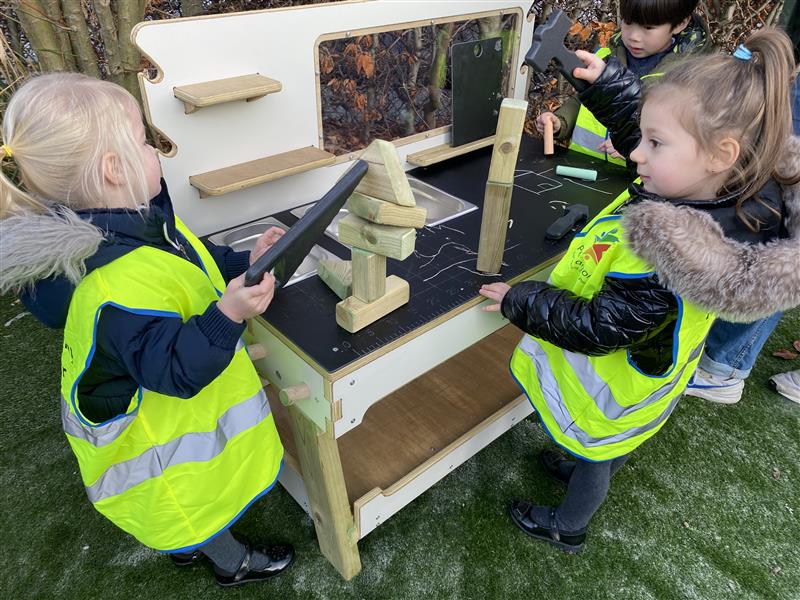
The six stages of play are interconnected and build upon each other. Let’s take a look at each of the stages in turn.
Stage 1 – Unoccupied Play – From birth to 3 months
Unoccupied play is an important first step in a child’s play development.
At this stage infants observe their surroundings and make seemingly random movements but this is an important way of engaging with the world and lays the foundations for future play.
During unoccupied play babies are absorbing information about the world around them by noting different textures, lights, sounds and movements.

As a child begins to understand their own body they begin to identify their legs, arms, hands and head and will make spontaneous movements when building muscle strength.
In this stage children learn to be content in their own company without relying on toys. Quite often babies are full of wonder when discovering their own fingers and toes and learning how to grasp.
Fostering Unoccupied Play
Educators can establish daily routines for unoccupied play by providing safe spaces where infants can freely move, stretch, turn and roll such as on a playmat in a Cosy Cove.
It is a good idea to create designated play zones that are free from distractions and noise in order for children to focus on their exploration.
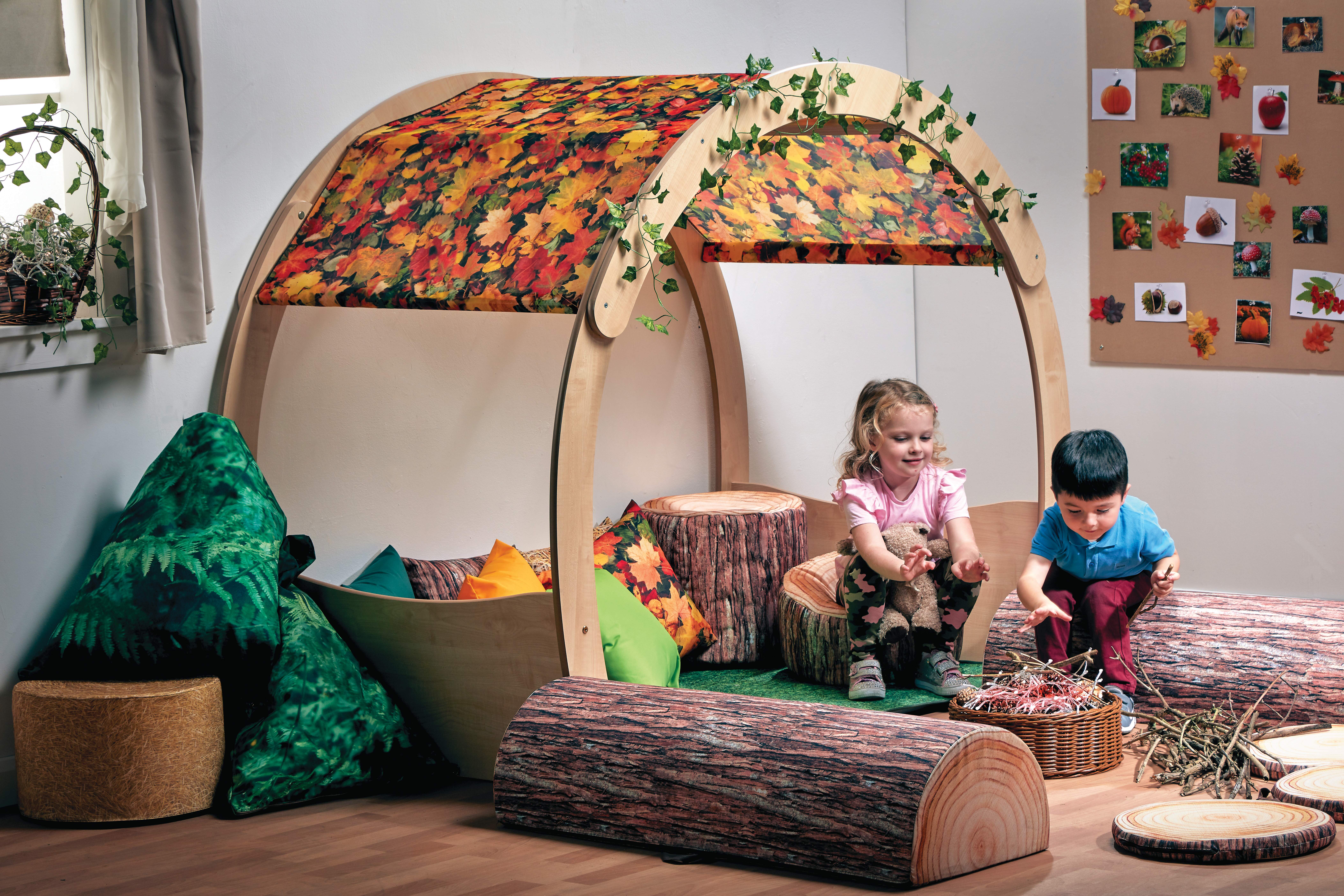
Adults don’t need to constantly engage with children during play at this stage, time can be given for children to develop curiosity and an interest in their surroundings.
Babies can be encouraged to spend time lying on their backs and their tummies which offers new perspectives and opportunities for exploration. Infants will enjoy exploring different sensations such as splashing in water, touching grass and feeling the wind on their face.
Stage 2 – Solitary Play – 3 months to 2 ½ years
Solitary play is when a child starts to explore alone, they will prefer entertaining themselves over playing with other children or adults.
Children will play alone and start interacting with toys during this stage but they are typically not interested in playing with other children. Playing alone is important for a child’s development as they learn that they can do things by themselves such as interacting with and manipulating materials.
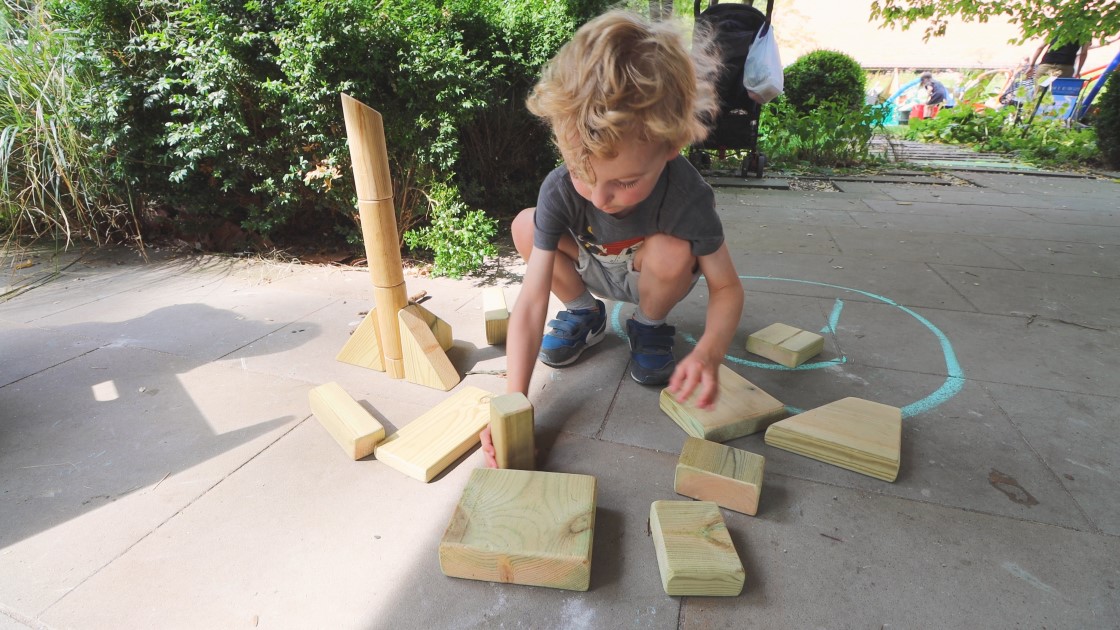
Likes and dislikes can be established during solitary play as children discover which toys or colours they like, building a sense of self. Toddlers are free to devise their own stories, experiment with objects and explore their surroundings.
Play is unstructured, with no clear goals, allowing children space and time to explore items. A child can make the rules by themselves such as choosing which toy to play with, how to use it and when to stop. By doing this they are building confidence, solving problems and developing a sense of control.
Providing Opportunities for Solitary Play
Practitioners can consider classroom areas and resources which may aid solitary play such as:
- A Construction Zone where a child can stack, sort and build.
- A Cosy Reading Zone which allows children to independently explore books.
- A Role Play Zone which facilitates solitary play such as creating a teddy bear tea party.
- Small World set ups using toy figures for real and imagined worlds.
- Challenges such as a range of puzzles which promote problem solving skills.
- A Writing Station for independent colouring and mark-making.
- Access to musical instruments.
- ‘Treasure Baskets’ containing different materials for children to explore.
Allowing children to play alone in this stage can boost creativity and independence. Children can be masters of their own worlds during solitary play often creating their own stories and game scenarios.
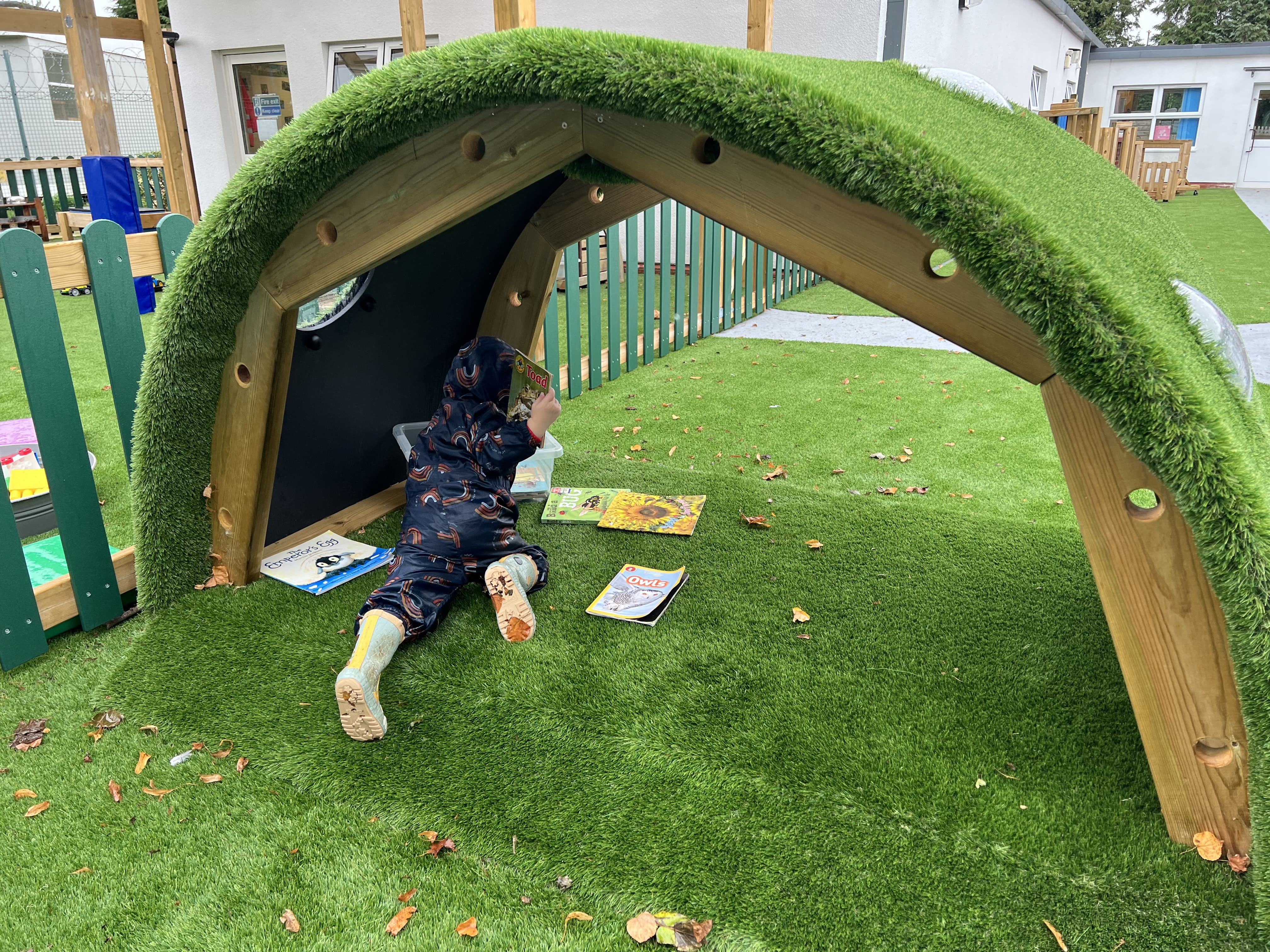
Open-ended toys and materials such as STEM blocks, playdough, mud kitchen equipment and natural materials can create wider opportunities for pupils to develop their imagination.
Stage 3 – Onlooker Play – 2 ½ to 3 ½ years
In the Onlooker play stage children become observers, watching others play without participating. During this stage children learn how to play with different toys and about social rules and interactions through observation.
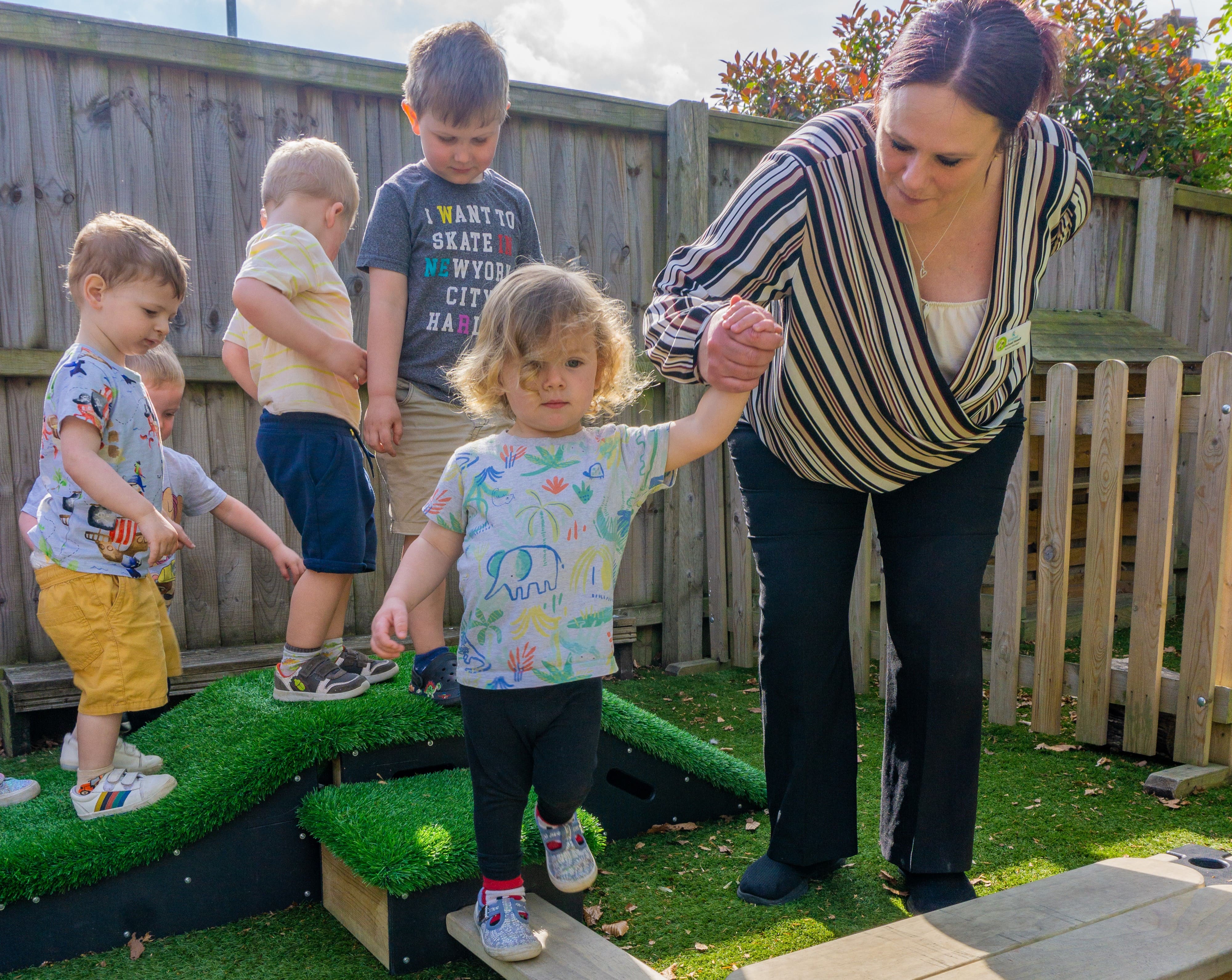
When children observe others playing, they will learn about social cues such as hand gestures, facial expressions and body language. Children will note the emotions and reactions of peers and will resonate with the feelings of others, building empathy.
The Importance of Observing and Learning from Peers
Onlooker play happens organically, children observe and learn from their peers and adults from a distance. A child may even comment, ask questions or suggest solutions to other children during play but will not become an active participant.
In this play stage children gain important knowledge about the world, including how to relate to others and different ways of playing and exploring. Once a child has watched and understood a play scenario, they may feel more confident to join in at a later stage.
.jpg)
Practitioners may encourage children’s observations by gently asking open-ended questions such as ‘What were the other children playing in the sandpit? ‘How did that game work?’
Open play spaces, viewing platforms, seated areas and stools and benches provide opportunities for children to watch and learn from others in the setting.
Stage 4 – Parallel Play – 3 ½ to 4 years
Parallel play involves two or more children playing alongside each other without direct interaction. Parallel play often manifests through imitation for example a child may decide to sit and build a tower of blocks next to another child building their own separate creations. A child may stick feathers to their painting and another child may decide to do the same.
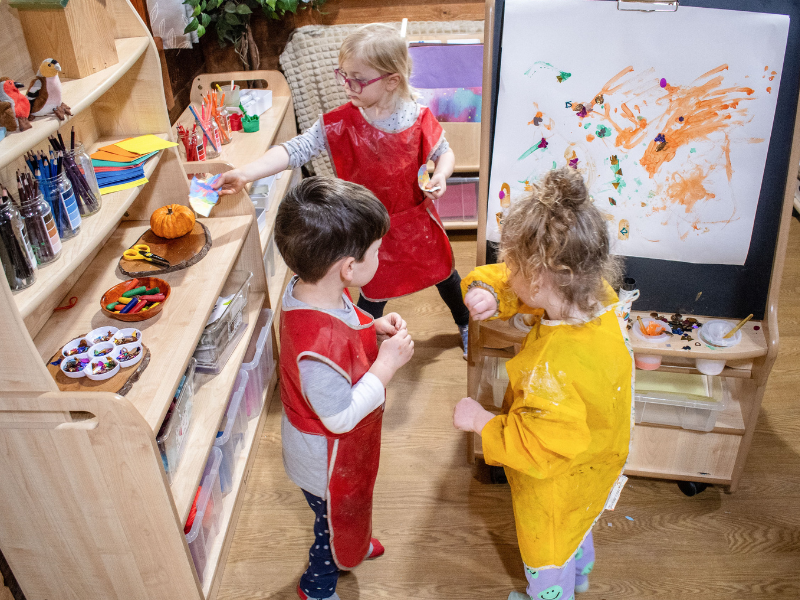
Within parallel play children are very much aware of what is happening around them therefore they develop listening skills and an understanding of new vocabulary.
Supporting Parallel Play
Mud, sand and water zones, and large gross motor areas such as a racetrack or mud kitchen and moving materials space are fantastic areas for parallel play. However, there needs to be enough space for children to play comfortably side-by-side.
A Tuff Spot Table can be used to create different sensory or fine motor activities, allowing each child to have their own space whilst playing near familiar children. Providing multiple sets of similar toys helps to reduce competition and promote parallel play.
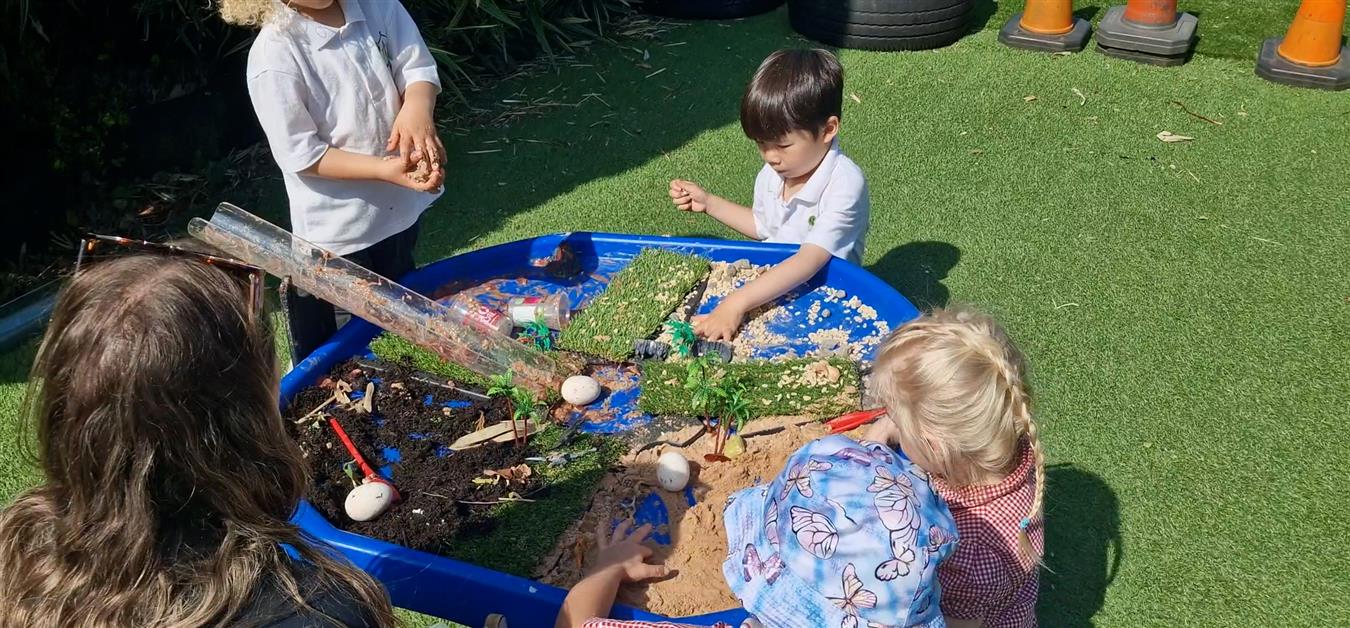
Parallel play marks the beginning of children acknowledging peers during play before transition to more social forms of play.
Stage 5- Associative Play- 4 to 4 ½ years
Children now begin to interact more directly during play by sharing resources and conversing about their activities. Learners will play side-by-side often with similar toys or activities. During this stage children start showing interest in what other children are doing and include each other in their play.
Learners begin to develop social skills when engaged in associative play but they will not yet be working together towards a common goal.
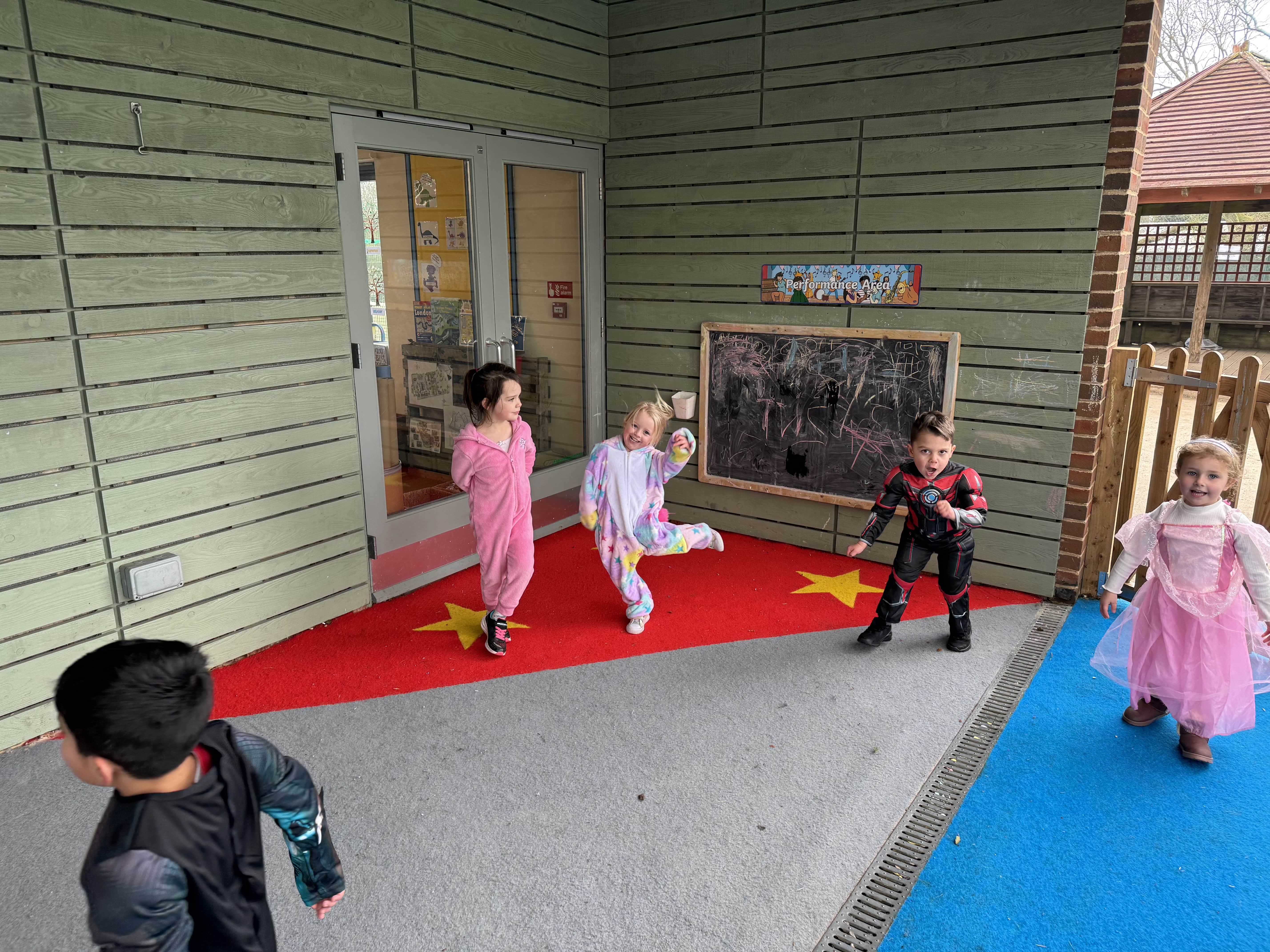
When playing together in the outdoor environment children will need to share resources such as swings, slides, Playframes, instruments or dressing up clothes. Students will begin to verbalise their thoughts and feelings, facing challenges and solving problems as they become more active.
As they learn more about themselves, children begin to take turns, work together and develop respectful attitudes.
Associative play happens in many different forms in EYFS settings whether children are: riding vehicles around a track together, sharing water and sand play, working on a large, collaborative art project or simply sharing meals and snacks together.
Stage 6 – Cooperative Play – 4 ½ years and up
During this last play stage children show interest in each other’s activities and can work together to achieve a common goal.
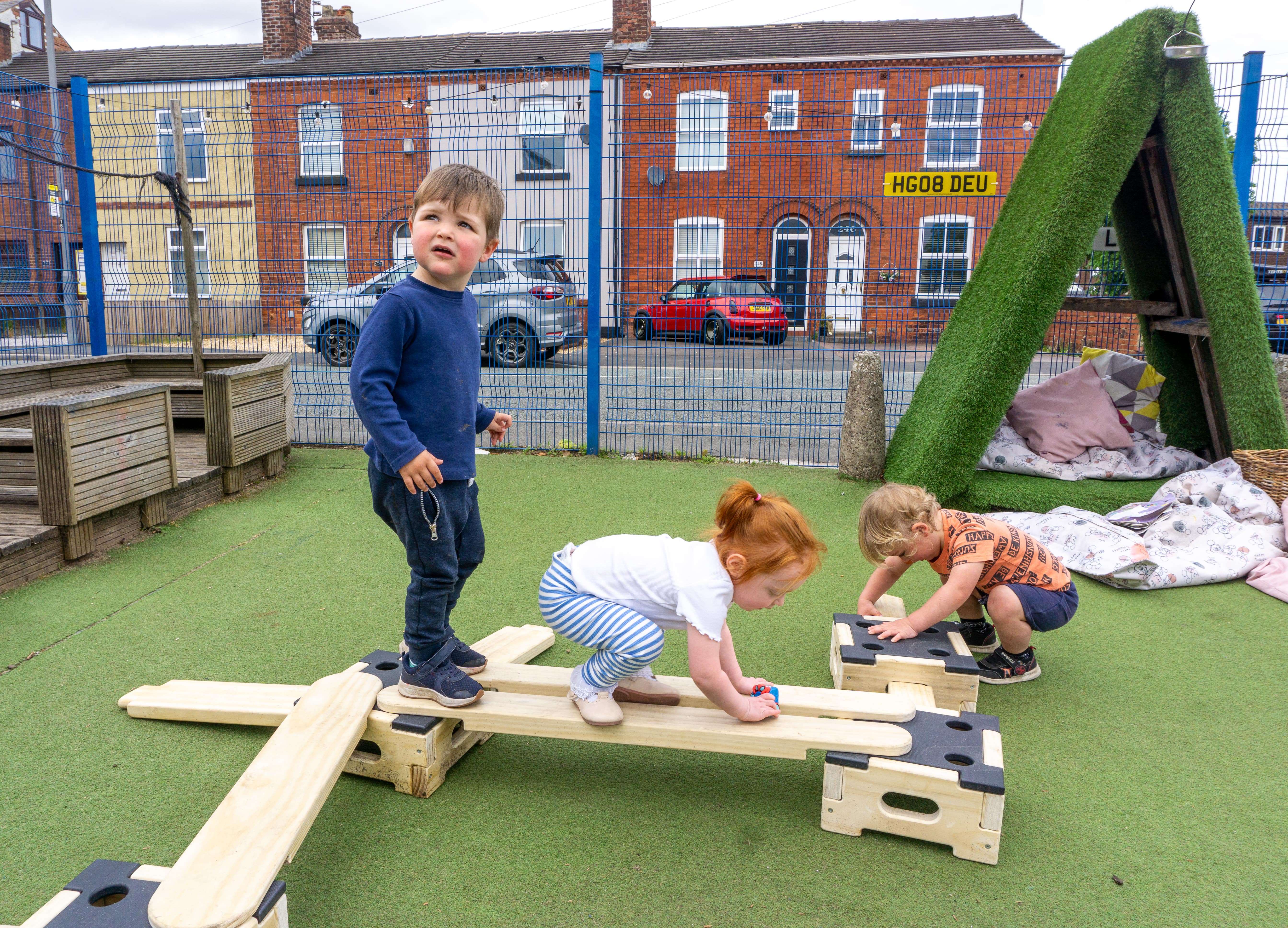
This is the most socially advanced form of play where children accept assigned roles, exchange ideas and share resources. Through cooperative play children learn how to communicate, compromise and devise solutions.
Pupils are able to take turns, demonstrate patience and manage their emotions. Communication and compromise are important as children learn to play together as a group whether using a Play Builder set to build an obstacle course, performing together on stage or devising rules in the home corner.
Aiding Cooperative Play
Practitioners can practise sharing and exchanging resources with children and play games which require turn taking. Simple tasks such as tidying up, washing resources or building a den encourage teamwork and cooperative behaviour.
Adults can help by ensuring that all children have a role in devised games and that roles are rotated. Learners can be encouraged to talk about what went well during their game and what they may change next time.
By offering a wide variety of resources which encourage group activities and games pupils will remain engaged and interested.
Progress may not be Linear
It is important to note that all children are unique and play development may not follow linear movement throughout the six stages. Age ranges are approximate as different children will progress at different rates.
Children may engage in different types of play depending on mood, situation and individual development. Learners may even move backwards and forwards between the different play stages over the course of a morning session!
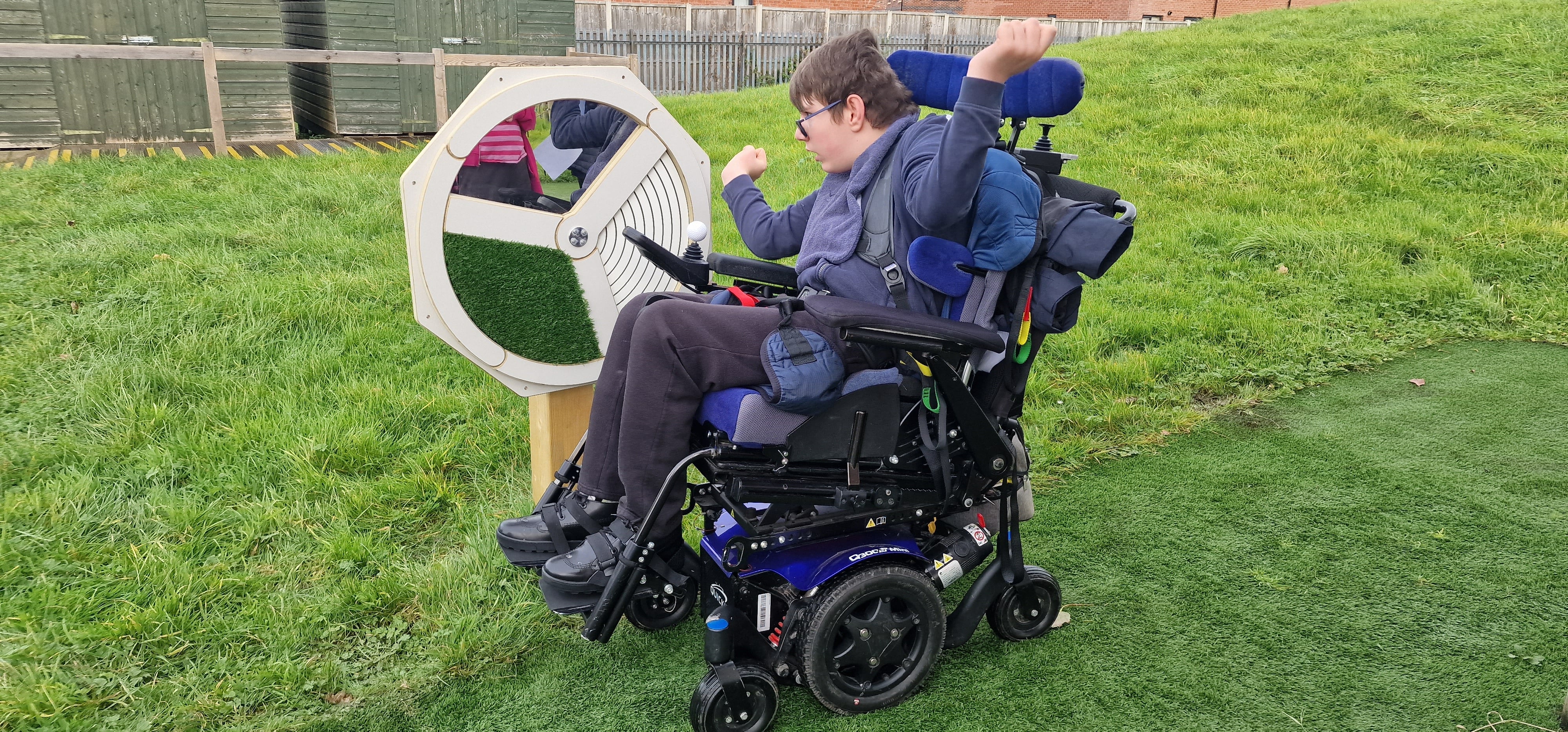
Having said this, practitioners can still use the Six Stages of Play framework to observe children’s play behaviour and to support development through opportunities, interventions and environmental design.
How Pentagon Play can Help to Enhance your EYFS Setting
Mildred Parten Newhall’s work on the six stages of play may encourage EYFS settings to consider their classroom and resources. How does the design and layout of your indoor and outdoor spaces accommodate different types of play?
Pentagon Play are industry leading experts in playground design and can advise on the creation of:
- Quiet areas for solitary play. Take a look at our Millhouse Curious and Cosy Zone perfect for reading and quiet play.
- Open areas for parallel and associative play – An Outdoor Timber Canopy creates the perfect outdoor space to accommodate both play stages.
- Play areas to encourage cooperative play – Our wide range of Trim Trail designs and Climbers greatly enhance cooperative play opportunities.
The Impact of Newhall’s Six Stages of Play on Early Years Education
Newhall’s contributions continue to impact Early Years education and our understanding of children’s social development through play.
Practitioners can view the six stages as a flexible guide rather than rigid categories, bearing in mind children’s individual differences when observing play.
Educators may rotate activities to support different play stages. This might involve setting up a sensory activity for parallel play one day and setting a collaborative building challenge using Get Set, Go! Blocks the next.
Teachers can schedule both individual and group projects over the course of a day/week. Activities can be gently designed to progress particular learners through play stages using modelling and encouragement.
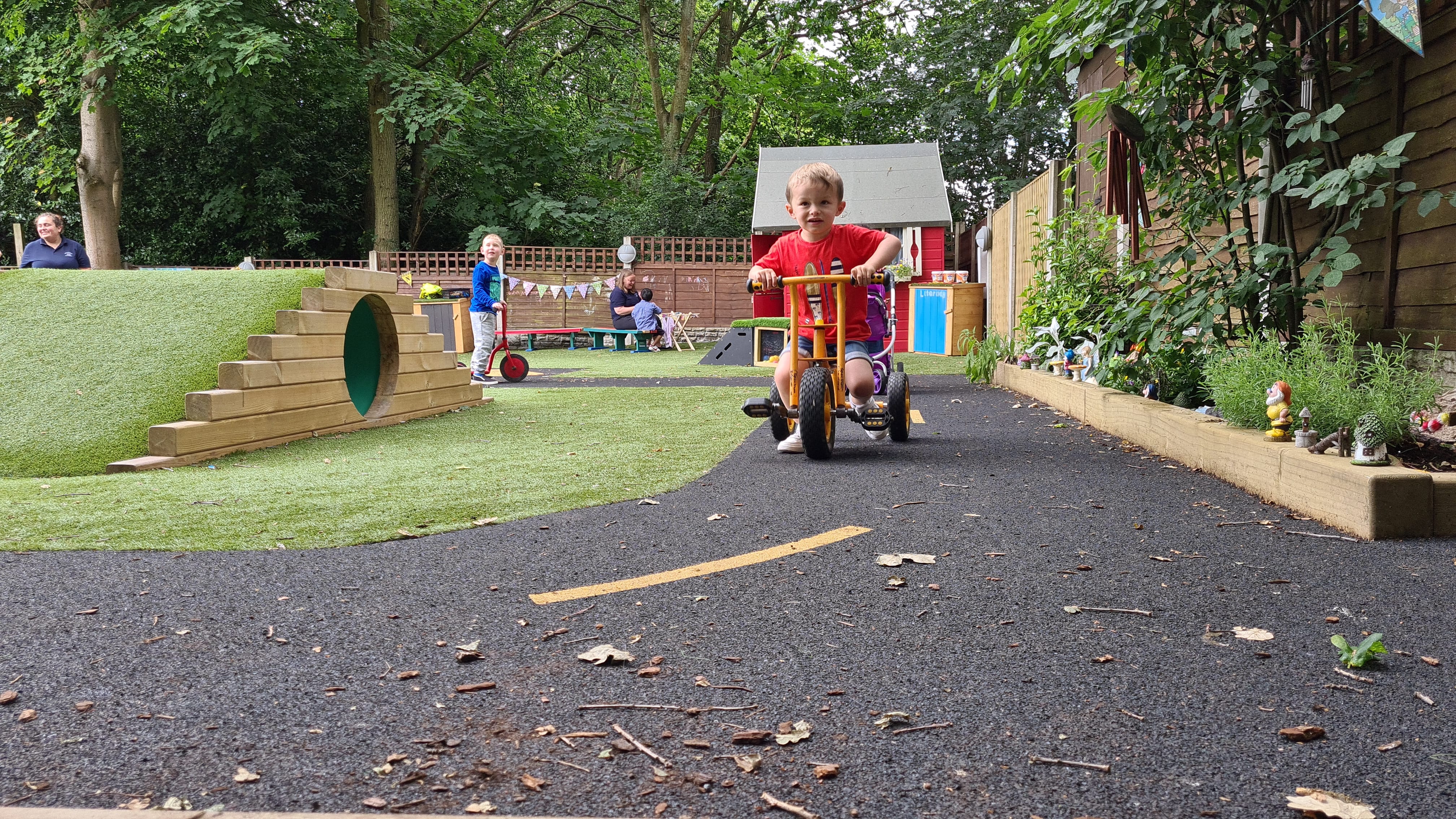
Children with SEN may progress through the play stages at different rates. Pupils who prefer solitary play can be gradually introduced to parallel play through structured activities and support.
Curriculum guidance for the Early Years Foundation Stage in England emphasises that ‘children learn through play, by observing each other and through adult-guided learning’. Newhall’s findings can certainly support educators in helping children to progress.



